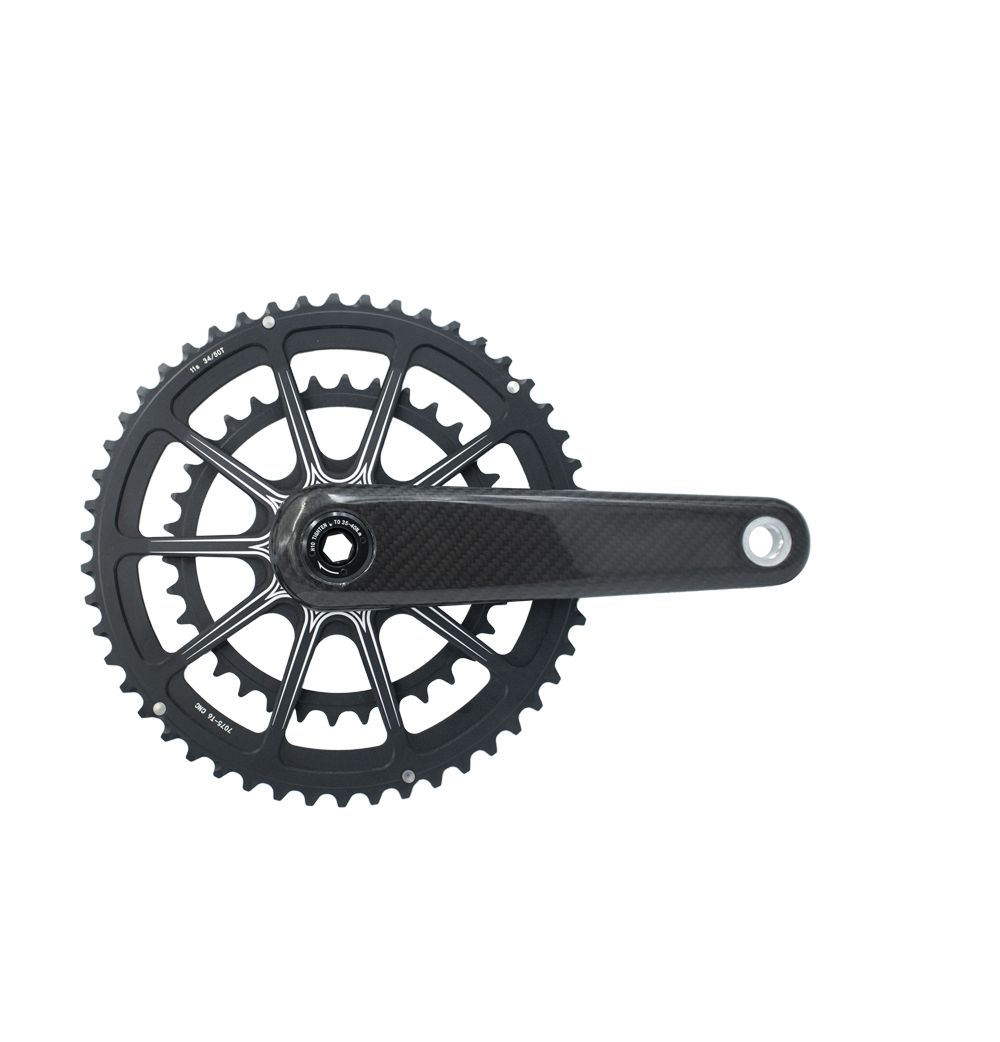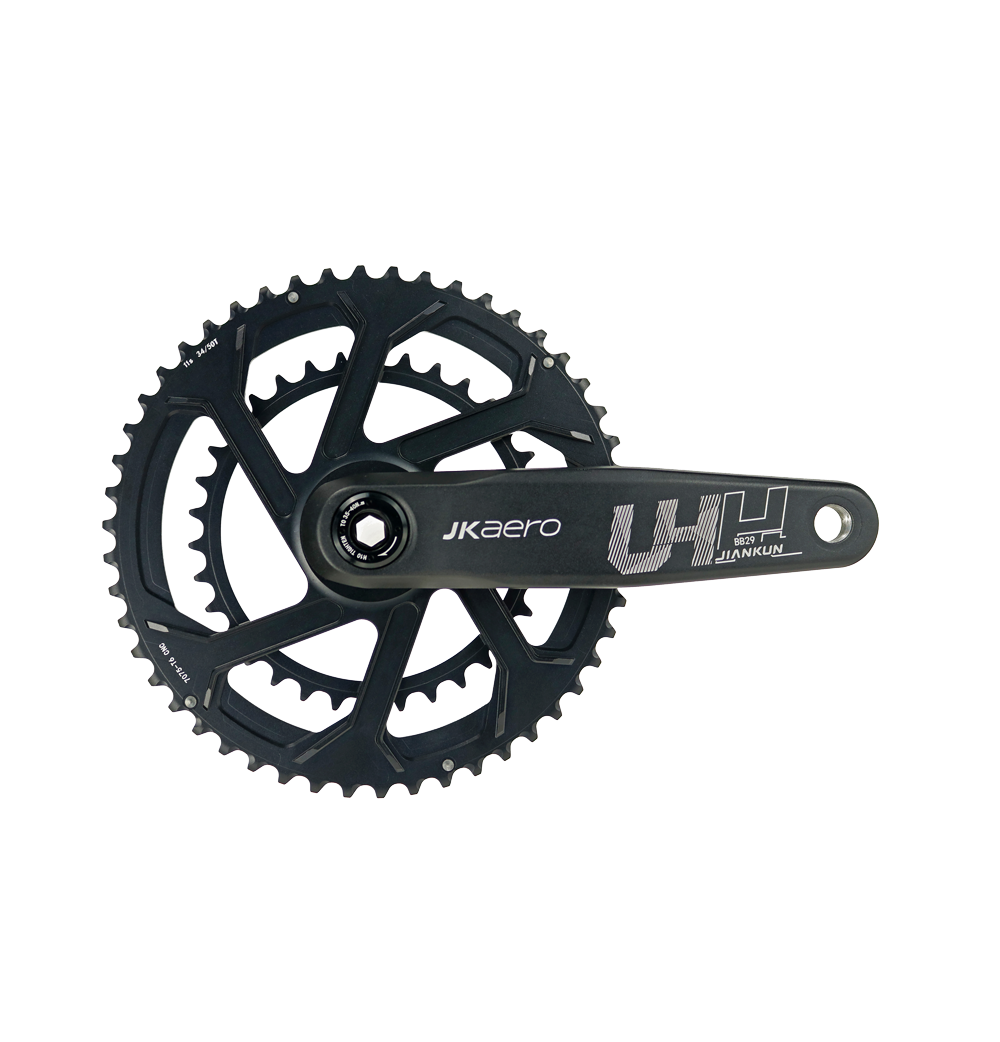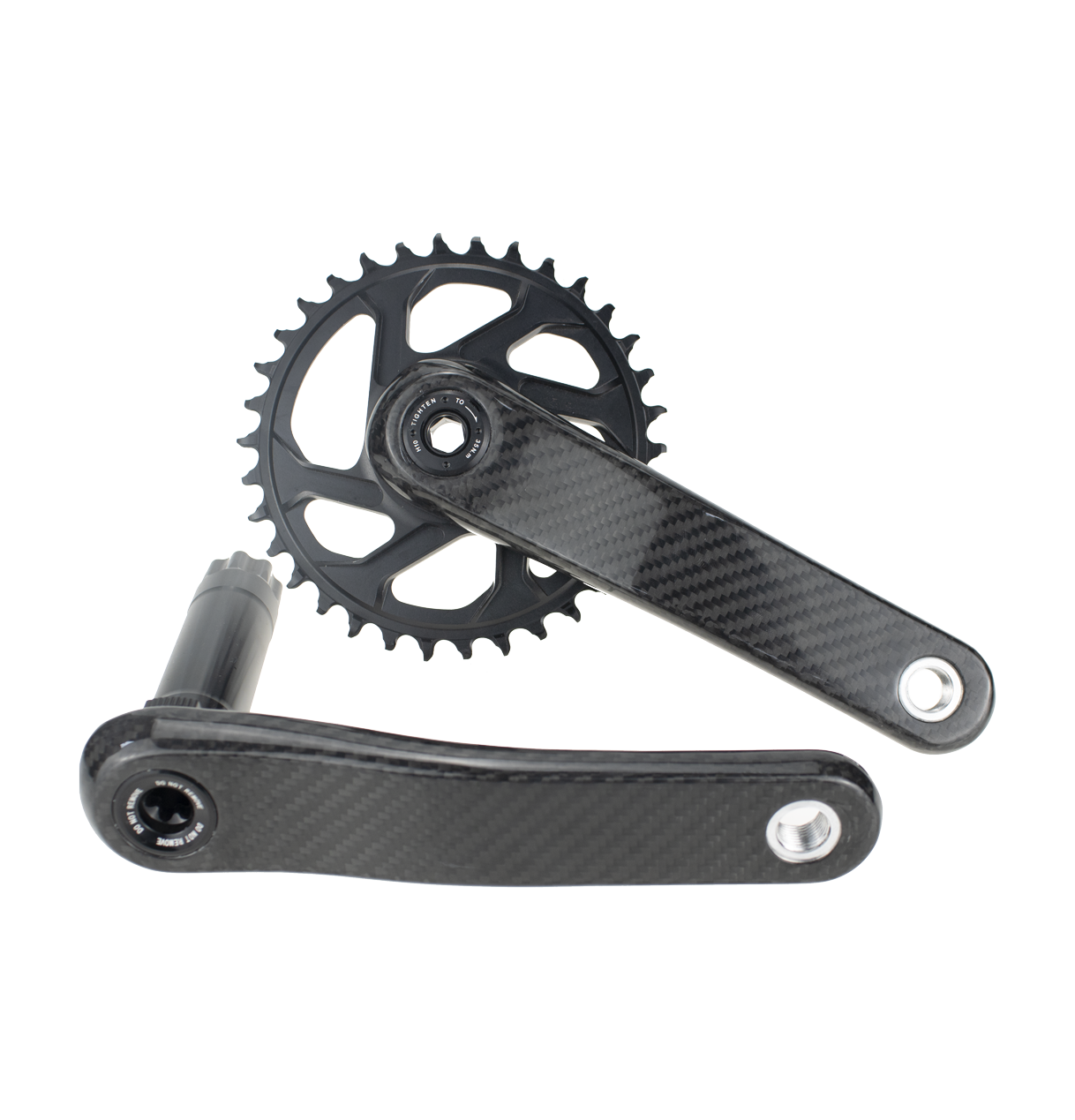نیازهای طراحی مجموعه دنده چرخه کوهستانی
شناسایی مجموعه دنده چرخه کوهستانی
گروه چرخ دنده ای کوهستان یک مولفه اساسی سیستم انتقال قدرت دوچرخه است که شامل بازوها و دندههای زنجیر میشود. نقش اصلی آن تبدیل قدرت پدال کردن سواران به انرژی چرخشی است که دوچرخه را به جلو میبرد. گروه چرخ دنده به پدالها و براکت پایینی متصل شده و اجازه انتقال نیروی سوار به زنجیر و در نهایت چرخ عقب را میدهد. این چرخه تبدیل انرژی برای حفظ جنب و جوش و سرعت طی سفر، همچنین هرچند منور کردن در مسیرهای فنی یا حرکت روی زمینهای تخت، حیاتی است. کیفیت یک گروه چرخ دنده میتواند به طور قابل ملاحظهای بر عملکرد سواران دوچرخه کوهستانی تأثیر بگذارد، که اهمیت ویژگیهایی مانند انتقال قدرت، وزن و محکمیت را برجسته میکند. یک گروه چرخ دنده با کیفیت بالا انتقال کارآمد قدرت را تضمین میکند که به سواران اجازه میدهد با راحتی بیشتر و خستگی کمتر پدال کنند. مواد سبک وزن مانند آلومینیوم یا فیبر کربنی میتوانند وزن کل دوچرخه را کاهش دهند و به بهبود سرعت و کنترل کمک کنند. علاوه بر این، استفاده از مواد و ساختار محکم برای تحمل ضربات سخت و شرایط چالشبرانگیزی که در دوچرخهسواری کوهستانی روبرو میشویم، ضروری است. بنابراین، انتخاب یک گروه چرخ دنده برتر میتواند توانایی صعود، شتابگیری و تجربه کلی مسیر را بهبود بخشد.
ویژگیهای کلیدی دندههای چرخ دوچرخه کوهستان
درک ویژگیهای کلیدی مجموعه دنده چرخ دوچرخههای کوهستانی برای بهینهسازی تجربه سواری شما اساسی است. یکی از جنبههای مهم، تعداد دندههاست که به طور مستقیم بر نسبتهای گیر و کیفیت کل سواری تأثیر میگذارد. معمولاً مجموعههای دنده دارای یک، دو یا سه دنده هستند. تنظیم با یک دنده به دلیل سادگی و وزن کمترش مورد علاقه سواران مسیر و رانندگان رقابتی اندورو است. در مقابل، مجموعههای دو یا سه دنده دامنه گستردهتری از نسبتهای گیر ارائه میدهند که به سواران کمک میکند تا انواع زمینهای مختلف را به صورت کارآمدی پیموده و مواجه شوند. انتخاب تعداد دنده بستگی زیادی به ترجیحات زمین و سبک سواری دارد. به همان اندازه که اهمیت دارد، اندازه دنده و تأثیر آن بر نسبتهای گیر است. دندههای بزرگتر مناسب زمینهای تخت هستند و سرعت بالاتری را فراهم میکنند، در حالی که دندههای کوچکتر قابلیت صعود بهتری روی مسیرهای شیبدار ارائه میدهند. به عنوان مثال، دنده 32 دندان گزینه تعادلی برای شرایط مختلفی است، در حالی که دنده 28 دندان برای صعودهای سنگینتر مناسبتر است. پیدا کردن اندازه مناسب دنده کارایی پدال کردن را افزایش میدهد و دوچرخه را برای نیازهای خاص سواری تنظیم میکند. طول دسته پدال نیز یکی دیگر از نظرات مهم در انتخاب مجموعه دنده چرخ دوچرخه کوهستانی است. این طول هم بر کارایی پدال کردن و هم بر راحتی سوار تأثیر میگذارد. دستههای پدال کوتاهتر، معمولاً بین 165 تا 170 میلیمتر، به کادنس بالاتر کمک میکنند و به دلیل عبور بهتر از زمین، معمولاً برای زمینهای فنی ترجیح داده میشوند. دستههای پدال بلندتر، حدود 175 تا 180 میلیمتر، ممکن است برای سوارانی که در مسیرهای باز سواری میکنند، به دلیل ارائه نیروی بیشتر مفید باشند. انتخاب طول مناسب معمولاً شامل در نظر گرفتن نوع زمین و ابعاد فیزیکی سوار است. علاوه بر این، موادی که برای ساخت مجموعههای دنده استفاده میشود، مانند آلومینیوم، فیبر کربن و فولاد، به طور قابل توجهی بر عملکرد کلی، وزن و هزینه تأثیر میگذارند. آلومینیوم به دلیل تعادل آن بین محکمیت، ارزانتر بودن و وزن، پرکاربردترین است. فیبر کربن بهترین انتقال نیرو را با کاهش وزن قابل توجه ارائه میدهد اما معمولاً گرانتر است و مقاومت کمتری در برابر ضربه دارد. فولاد محکمیت و قدرت بینظیری ارائه میدهد، اما با وزن بیشتری همراه است. انتخاب مواد مناسب شامل توازن دادن به اهمیت کاهش وزن نسبت به محکمیت و بودجه است.
انتخاب درست گروه دنده ای خودروی کوهستانی
هنگام انتخاب دندهٔ مناسب برای دوچرخهٔ کوهستانی، اولین قدم مطرح کردن سبک سواری خود است. آیا شما یک سوار تهاجمی هستید که مسیرهای چالشبرانگیز را پیموده، یک سوار عادی که از سواریهای آرام لذت میبرد یا یک مسابقهگر حرفهای هستید که به بهینهسازی عملکرد میپردازد؟ نیازهای دنده برای این سه گروه بسیار متفاوت است. سواران تهاجمی ممکن است به صلابت و تنظیمات زنجیری که بتوانند با زمینهای سختتر مقابله کنند، اولویت بدهند، در حالی که سواران عادی ممکن است به طراحیهای چندمنظورهای که تعادل بین راحتی استفاده و عملکرد را ارائه میدهند، علاقهمند باشند. سواران مسابقهای معمولاً مواد سبکتر و انتقال قدرت کارآمدتر را برای افزایش سرعت و توانایی صعودی خود اولویت میدهند. درک این تفاوتها کمک میکند که تصمیمگیری منطقی و بر اساس نیازهای خاص خود انجام شود. به اندازهٔ مهم بودن سبک سواری، تطابق بین دنده و محور پایین (bottom bracket) نیز اهمیت دارد، که این موضوع برای عملکرد بهینهٔ دوچرخه حیاتی است. محور پایین، رابط بین قاب دوچرخه و دنده است و از این رو تأثیر مستقیمی بر ثبات دوچرخه و کارایی انتقال نیرو دارد. عدم تطابق بین اجزا میتواند منجر به عملکرد ضعیف یا حتی شکست مکانیکی شود. لذا، بررسی مشخصات هر دو دنده و محور پایین برای تضمین تطابق در جنبههایی مانند اندازهٔ محور، نوع کف و ابعاد محور پایین ضروری است. این توجه به تطابق، علاوه بر اینکه اطمینان میدهد دنده تنها مناسب باشد بلکه به نحوهٔ بهینه کارکرد آن کمک میکند و تجربهٔ سواری کلی را بهبود میبخشد.
نمونههایی از بهترین مجموعههای دنده چرخ دوچرخه کوهستانی
بررسی بهترین گزینهها در مجموعههای دنده چرخ دوچرخه کوهستانی، گزینههایی را نشان میدهد که طراحی شدهاند تا به نیازهای مختلف سوارکاران پاسخ دهند، از عملکرد تا سختی و کارایی. مجموعه دندهی C9B-72BK-9D به خاطر عملکرد بینظیر خود در دوچرخهسواری جادهای ستایش شده است. این مجموعه دارای BCD 41mm و Q-Factor مناسب 148mm است که قادر به مدیریت پیکربندیهای 2x12S و 2x11S است. این قابلیتهای فنی مطمئن میکند که سوارکاران انتقالهای گیر بیدرنگ و کارایی بالا در پedaل زدن را تجربه کنند. با وزن کمی حدود 560g، این مجموعه گزینهای مناسب برای سوارکاران جدی است که به دنبال بهترین عملکرد در همراه راههای کوهستانی و شهری هستند.

بعد، JKB-72NK-9D گروه چرخ دنده به خاطر ساختار محکم و مصالح کیفیت بالا خود برجسته است، که سختی قابل توجهی برای سواران درخواستکننده ارائه میدهد. با BCD 41 میلیمتر و گزینههای مختلف چرخ دنده، امکان تنظیم دقیق نسبت گیر را برای سواران فراهم میکند. کاربران به استحکام و دقت آن اشاره کردهاند، که آن را به یک همراه عالی برای مسابقات، حرکت شهری یا جلسات تمرین تبدیل میکند، پشتیبانی شده توسط بازخورد کاربران که عملکرد ثابت آن را ستایش کردهاند.

در نهایت، C9A-711L-9D/C9A-712L-9D , معروف به استحکام و کارایی خود، برای علاقهمندان سواری دوچرخه کوهستان ایدهآل است. با طراحی متناسب با نیازهای مدرن، دارای خط زنجیر 49 میلیمتر و 52 میلیمتر است که گزینههای گیربکس را برای سیستمهای 1x12 و 1x11 افزایش میدهد. سازگاری Boost و طراحی منحصر به فرد آفست، هماهنگی زنجیر را تضمین میکند، ویژگیای که در بررسیهای خبرگان و مقایسههای صنعتی مورد تحسین قرار گرفته است.

این گروههای دنده نمایانگر بالاترین سطح مهندسی و عملکرد هستند و به سواران ابزارهای لازم برای تجربه بیکاری برتر را ارائه میدهند.
بهینهسازی گروه دنده دوچرخه کوهستان شما
برای اطمینان از عملکرد طولانیمدت دنده چرخ دوچرخه کوهستانی خود، نگهداری منظم ضروری است. ابتدا با استفاده از شستشوی لطیف و فرش نرم، دنده را از خاک و آلودگی پاک کنید. بعد از پاک شدن، روغن به دنده و قسمتهای متحرک دیگر اعمال کنید تا از زنگ زدگی جلوگیری و عملکرد滑顺 تر حصول نمایید. به طور منظم برای علائم سوزش و خرابی مثل برگشت مسامیر یا دندههای خرج شده که میتوانند کارایی سواری شما را تحت تأثیر قرار دهند، چشم داشت کنید. دندههای دوچرخه را به طور مکرر بررسی کنید و هر قطعه خرج شده را جایگزین کنید تا کارایی بهینه و طول عمر را حفظ کنید. اگر علائم مشخصی از نیاز به ارتقاء دنده دیده شود، باید در نظر گرفته شود. اگر کاهش قابل توجهی در عملکرد، مانند دشواری در فشار دادن یا افتادن مکانیکی زنجیر مشاهده کنید، این ممکن است نشانه قطعات خرج شده باشد. همچنین، اگر صدای غیرمعمولی مانند صدای خراخرایی یا کلیکزنی در حال سواری شنیده میشود، ممکن است زمان ارتقاء رسیده باشد. آمار نشان میدهد که بیشتر سواران بعد از خرج شدن قابل توجهی، کاهش حدود ۱۵٪ در عملکرد را تجربه میکنند که کارایی کلی دوچرخه را تحت تأثیر قرار میدهد. انتخاب دنده جدید میتواند تجربه سواری شما را بهبود بخشد و انتقال قدرت بهتر و قابلیت اعتماد بالاتری را در مسیرهای چالشبرانگیز فراهم کند.
سوالات متداول درباره مجموعه دندههای دوچرخه کوهستانی
جایگزینی مجموعه دنده بدون تغییر قاب پایین امکانپذیر است اما به سازگاری بستگی دارد. مجموعههای دنده و قابهای پایین در استانداردهای مختلفی (مانند BB30، GXP) موجود هستند و باید مطمئن شوید که طول محور و نوع رابط مناسب باشند. حتماً مشخصات سازنده را بررسی یا نظر خبرگان را جویا شوید تا مشکلات سازگاری که میتوانند عملکرد و ایمنی را تحت تأثیر قرار دهند، جلوگیری شود. مشکلات رایج در مجموعه دندههای دوچرخه کوهستانی شامل摩س و خرابی در دندهها، صداهای خراخره یا حتی شل شدن بازوی دنده است. بر اساس یک نظرسنجی، حدود ۳۰٪ سواران این مشکلات را به طور مکرر تجربه میکنند، اغلب به دلیل نگهداری نامناسب یا عدم سازگاری قطعات. بررسیهای منظم و جایگزینی زمانبندیشده میتواند این مشکلات را کاهش دهد و عملکرد滑ان و بهینه دوچرخه را تضمین کند.

